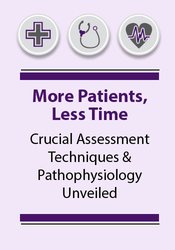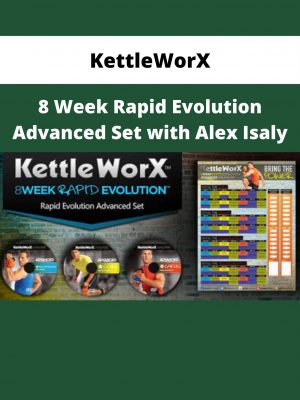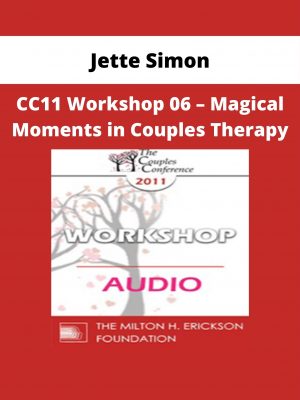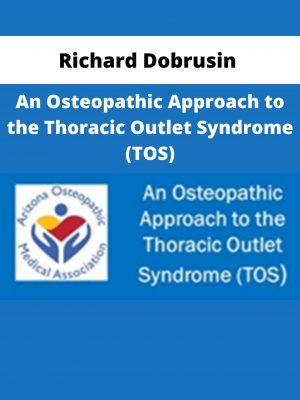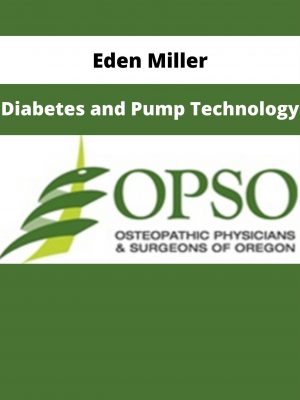Angelica F. Dizon – More Patients, Less Time
$199 Original price was: $199.$56Current price is: $56.
Shopping Instructions:
- DISCOUNT 15% : SHOP15
- Product Delivery: Within 1 – 12 hours after purchase.
Available for Pre-Order. This product will be available within a few days.
Angelica F. Dizon – More Patients, Less Time
Are you missing vital clues in your physical assessments?
In today’s clinical world, healthcare professionals are tasked with seeing more patients in less time… making it more important than ever that you conduct quick, yet precise head-to-toe assessments.
With this cutting-edge online course, you’ll get step-by-step guidance on how to quickly and thoroughly assess patients, understand the pathophysiology behind their condition, intervene effectively, and proper techniques to documenting your assessments and findings.
In 6 self-paced modules, you will be able to predict a differential diagnosis by identifying cardiac, respiratory and neurological disorders!
Walk away with advanced knowledge to:
- Interpret pathophysiology and differential diagnoses for crackles, wheezes, rhonchi and rubs
- Discuss management of obstructive vs. restrictive lung disease
- Practice a thorough 6-part neurological exam and document findings
- Distinguish whether abnormal S1 and S2 heart sounds are pathological or benign
- Outline an effective method to review options in pharmacologic therapy for any condition
- And so much more!
Improve your confidence, increase efficiency, and eliminate errors today!
Head-to-Toe Approach
Learn tips, tricks, and tools to conduct a quick and precise head-to-toe assessment.
- Assess the patient using the most comprehensive approach
- Evaluate baseline and identify patient status changes
- Devise tips and tools to perform a more efficient exam without missing key clues
- Conduct proper assessment skills – inspection, palpation, percussions, auscultation
Cardiac Exam
Knowing the different murmurs, their presentation, sounds and location to accurately pinpoint the disease process.
- Examination of mitral, tricuspid, pulmonary, and aortic
- Auscultation sites, sequencing and skills
- Characteristics of a functional murmur
- 7-point classification
- When does a murmur become pathologic?
- Strategies for detection of abnormal cardiac sounds
- First-hand partner demos: Practice and learn with examples
Respiratory Exam
Identifying the different breath sounds and their locations to narrow down diagnosis
- Physical assessment of the respiratory system – key points of normal anatomy to remember
- Identification of normal, abnormal, decreased or absent breath and lung sounds
- Assessment and techniques of Tactile Fremitus, percussion, lung auscultation
- Interpreting what you are hearing and what you should expect to hear:
- Bronchial, Broncho-vesicular, Vesicular Breath Sounds
- Bronchophony, Egophony, Whispered Pectoriloquy
- Death Rattle, Absent Breath Sounds
- Learning the adventitious sounds like Crackles, Rhonchi, Stridor, Wheezes and what to do with them
- What Lung Sounds to expect in different disease states
- First-hand partner demos: Practice with sounds — listen, assess, and learn
Neurological Exam
Mastering the 6-part components of a Neuro exam in less time.
- Unraveling the 6-Part components of a thorough Neurological Examination
- ABCT Components of Mental Status
- Key points and clues of using Confusion Assessment Method (CAM) Instrument and what can be diagnosed as a result
- Evaluate an efficient and accurate assessment of normal vs. abnormal findings for: altered mental status, cranial nerves, motor, sensory, cerebellar functions, reflexes
- Danger Signs for abnormal findings and how to identify diseases by physical examination
- First-hand partner demos: Practice with case studies and proper assessment
- Key clues you can’t miss
- Risk factors, readings, subjective and objective data
- Plan of care
Would you like to receive Angelica F. Dizon – More Patients, Less Time ?
Endocrine and Metabolic Problems
- Pituitary disorders
- Hypoglycemia
- Free radicals — essential in health, deadly in disease
- Diabetic ketoacidosis
- Apoptosis
- Adrenal gland dysfunction
- Addison’s disease
- Jaundice
- Implications of hormones
- Thyroid disorders – mechanism of onset affects treatment
Cardiovascular and Renal Problems
- Starling’s Law – normal capillary flow
- Heart failure
- Relationship between cardiac diseases and hypertension
- Unraveling hypertension
- Current concept on cardiogenic shock
- Atherosclerosis – the role of inflammation
- Anaphylaxis
- Acid-base disorders
Respiratory Problems
- Chronic obstructive pulmonary disease exacerbations
- Obstructive lung diseases affecting the mechanics of lung ventilation
- Sudden death in asthma
- Acute lung failure/ARDS
- Arterial blood gases made simple
Shock
- Common mechanisms of all types of shock
- The cardinal role of mediators in shock
- Newer therapies based on current pathophysiological understanding
- End points of resuscitation
- What type of shock is this?
The Immune System
- Inflammation – acute phase response
- Systemic inflammatory response
- Infection – part of a bigger picture
- Multiple organ dysfunction syndrome
- Stress reaction
- Autoimmune diseases
More Patients, Less Time:
Angelica F. Dizon, MD, BSN, MBA-HCM, RN, is a registered nurse and a Doctor of Medicine with two decades of experience in clinical practice and academic teaching, predominantly in the hospital setting.
Angelica has been well recognized for her past work in medical surgical roles, and has also gained experiences working in home health care and skilled nursing. Most recently, she’s serving as the director of clinical services in one of the leading home healthcare agencies in Maryland.
Her diverse experiences have provided her with a unique patient perspective to facilitate the highest level of patient care – anticipated findings, as well as identification and monitoring of various disease states. Her passion and talent for educating and mentoring other healthcare professionals will make this an event you don’t want to miss!
Interact and collaborate with other professionals in the online community through chat boards and online forums. Participants love sharing ideas, asking questions and networking with peers!
Complete your CE tests online at the completion of each module, with instant access to your CE certificates – earn up to 12.6 CE hours
Related products
HEALTH & MEDICAL
KettleWorX – 8 Week Rapid Evolution Advanced Set with Alex Isaly
HEALTH & MEDICAL
HEALTH & MEDICAL
Dr Heidi M Crocker – Yoga Alignment | Speaker: Heidi Crocker EdD, DC
HEALTH & MEDICAL
Bernadette Giorgi – Attitude Ballet & Pilates Fusion – Just B Method
HEALTH & MEDICAL
CC11 Workshop 06 – Magical Moments in Couples Therapy – Jette Simon
HEALTH & MEDICAL
Regina Meredith – Conscious Media Network with Regina Meredith – Eric Pearl on The Reconnection
HEALTH & MEDICAL



